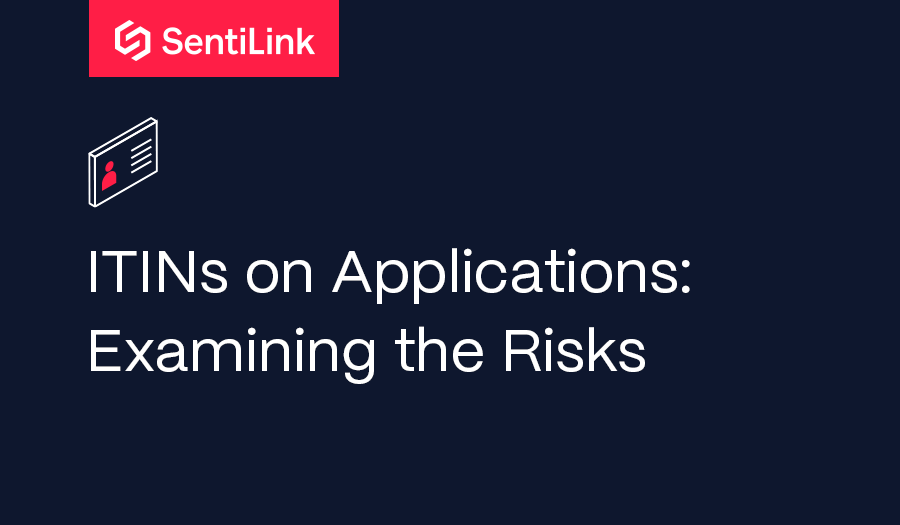Blog post
ITINs on Applications: Examining the Risks
SentiLink
Published
August 25, 2023

UPDATE: We've published more in-depth research on this topic, so please check out our latest blog post about ITINs here.
Nine-digit numbers are used frequently in official capacities in the U.S.. From Social Security numbers to state DMV numbers and even a ZIP+4, these combinations are often required elements consumers must provide to help confirm their identities. Another 9-digit number is the Individual Taxpayer Identification Number, or ITIN, which is issued by the Internal Revenue Service. Occasionally, individuals submit applications for financial products using an ITIN in the SSN field. Like SSNs, ITINs are 9-digit numbers structured XXX-XX-XXXX. They start with the number 9 and are characterized by a range of 70–88 in the fourth and fifth digits.
ITINs are issued to resident and nonresident aliens, regardless of immigration status, who are not eligible for an SSN but need to report income in the U.S.. As of Jan. 1, 2021, there were 5.4 million active ITINs in the U.S..
While an application made with an ITIN instead of an SSN doesn’t automatically make it fraudulent, many FIs do not accept ITINs due to the unique credit risks involved with making underwriting decisions for this particular segment of the population. Further, immigration status does not limit who can obtain an ITIN, making undocumented immigrants eligible. This can make ITIN lending a somewhat controversial business practice. Some FIs are willing to accept the risk to win this underserved customer base.
How does lending to an ITIN holder compare to lending to an SSN holder from the perspective of overall performance?
Analyzing Performance:
To better understand how outcomes of lending to ITIN holders compare to SSN holders, we analyzed the performance of 485,431 credit card applications over a 12-month period, separating those applicants into cohorts of ITIN holders and SSN holders.
The charge-off rates we observed in this sample over 12 months suggest that lending to ITIN holders would not have a negative impact on overall charge-off rates. In fact, in the sample, ITINs performed better than SSNs and started charging off one month later:
- Applicants using SSNs charged off at a rate of 8.2% by month 12
- Applicants using ITINs charged off at a rate of 7.3% by month 12
Conclusion:
It should be noted that the performance we saw may have been driven by a selection bias -- i.e., credit card applications that were approved for ITIN holders may have been flagged for step-up verification, leading to approvals for higher-quality borrowers only. However, this analysis suggests that FIs could benefit from including at least a portion of the ITIN holder population in the credit box, and may not pose the performance risk that could be easy to assume exists. ITIN holders are an underserved market that could prove to be an attractive customer segment.
Related Content

Blog article
December 2, 2025
The Identity-Theft Risk Profile of NBA and NFL Draft Prospects
Read article
Blog article
November 21, 2025
CIP Requirements: What Financial Institutions Need to Know
Read article
Blog article
November 7, 2025